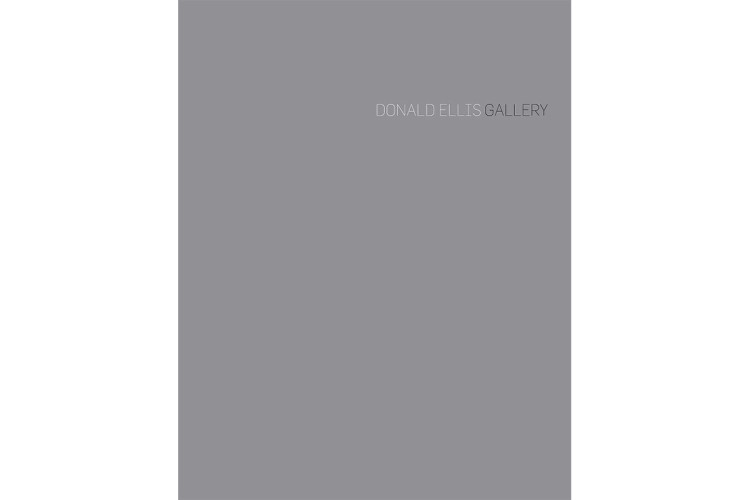
2012
$45.00 USD
ca. 1750
yellow and red cedar
height: 11"
Inventory # N3809
Please contact the gallery for more information.
Donald Ellis Gallery catalogue, 2012, pl. 6
Brown, Steven C. Transfigurations: North Pacific Coast Art, George Terasaki, Collector. Seattle: Marquand Books, 2006, pl. 61
Holm, Bill. Box of Daylight. Seattle: University of Washington Press, 1984, pg. 70, pl. 107
Sturtevant, William (ed.) Boxes and Bowls: Decorated Containers by Nineteenth Century Haida, Tlingit, Bella Bella, and Tsimshian Indian Artists. Washington: Smithsonian Institution Press, 1974, pls. 69, 70 and 71
This small and densely decorated bent-corner box illustrates an ingenious technique of traditional formline composition known as a ‘corner-oriented’ design. A simple concept, the visual effect it produces lends a three-dimensional aspect to the two-dimensional formline designs carved into the surface. Just when or where the first example of this design technique was created is unknown, but it does appear in certain early historic-period containers, of which this is an excellent example.
In this remarkable old container, a classic early style design composition, which would ordinarily be carved across the full width of a rectangular chest (usually about twice as wide as they are deep) has instead been ‘bent’ at the center, with each half of the design covering one side of the square box. The resulting ninety-degree angle in the center of the design gives that protruding, three-dimensional quality to the formline image. Corner-oriented designs appear on some very early containers, like this one that most likely dates to the late eighteenth century, and can be seen with a certain regularity in bent-corner boxes made all through the nineteenth century.
The style of the design work itself on this box features numerous characteristics that indicate an early creation. These features appear in boxes, chests, house screens and other objects that are documented or can be dated by various methods to the early historic period, which spanned the last decades of the eighteenth century. The width and overall density of the primary formlines is the first indication of the container’s age. The resulting paucity and small size of the carved-out areas is perhaps the easiest characteristic to pick out about the design. The small crescents and trigons (also known as ‘T-shaped reliefs’) that define and separate the edges of major formlines are small and narrow, as are the other V-cuts and beveled areas between major formlines. Inner ovoids are proportionally large within their surrounding formlines, and the carved-out areas around them are narrow and minimal when compared to designs with formline proportions typical of nineteenth-century work. (See illustrations below, which show examples from the eighteenth to the late nineteenth century).
In addition to formline proportions, certain design elements are executed in a manner typical of eighteenth-century work. The eyes that appear in several places have the unusual qualities of somewhat thicker eyelid lines and deeply carved trigon areas (the ‘whites’ of the eyes). These eyes and eyelid lines nearly fill the eyesocket ovoids completely, with very small carved-out areas around them. This feature only appears in the earlier works of the historic period, and had dropped from favor and usage by artists by the first decades of the nineteenth century.
The secondary formlines are limited to areas of single or double design elements, since not enough space exists within the primary formlines to develop secondary complexes of the kind seen in nineteenth-century design work. And yet, even though the tradition of the time dictated the design proportions, the maker of this box composed and executed these images with a true master’s hand, as evidenced by the uniqueness and originality of the compositions. Later artists evolved the design tradition in many ways through the first half of the nineteenth century, but everything they did was based on not only the essential foundations that are exemplified in work from this time, but also on the mastery and original ideas that artists of the early period infused into their design work. Without the examples of design mastery and the freedom to create anew, while remaining true to the essence of the formline tradition, so solidly established by the earliest formline artists, those who came later would not have had the inspiration and guidance that led them to develop the masterful evolutionary changes that carried the design tradition to its artistic peak in the third quarter of the nineteenth century.
The box originally had a lid, and the two holes on each side near the top ‘center’ of the design (the centerline or axis of the complete design) once held lid ties of rawhide or cordage that fastened the lid onto the box for transportation.
The small mask-like face in the center of the frontal design field is beautifully and sensitively carved, and harks back to some of the even earlier examples that incorporated truly mask-like faces, carved with as much three-dimensionality as the thickness of the box sides would allow. (See example B below). The fourth corner and bottom of this box were probably originally fastened with sewn stitches of spruce root, which was the earlier method of securing these parts. It appears that over time, though, the original stitches became brittle and gave out, and were replaced by wooden pegs and/or iron nails. This has often happened in containers of this age that remained in service for most of their two centuries and more of existence.
Steven C. Brown
April, 2011

$45.00 USD